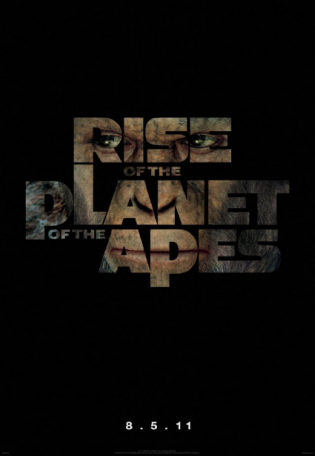Date Posted: August 26, 2011
Print Edition: August 25, 2011
 Every movie, at least somewhere along the way, has put thought and care into its making. But in most cases it is lost along the way, or mutated through rewrites, reshoots, tossed ideas and studio meddling. A lot of these problems are synonymous with Twentieth Century Fox, which is what makes Rise of the Planet of the Apes even more of a bizarre outlier. All the thought and care has made its way onto the screen. There is no evidence of unfinished CG work that has typified some of its “biggest” releases, nor is it founded on a mess of a script. In a summer with sequel-after-remake-after-reboot, here is a prequel/reboot/remake that stands on its own as an entertaining movie. No more, no less, and that is something to be glad to see amidst the nonsense of dressed up tentpole releases that are corpses underneath. There are standard chills and thrills here, but there is also substantial material here, coming from the writing, photography, and acting departments.
Every movie, at least somewhere along the way, has put thought and care into its making. But in most cases it is lost along the way, or mutated through rewrites, reshoots, tossed ideas and studio meddling. A lot of these problems are synonymous with Twentieth Century Fox, which is what makes Rise of the Planet of the Apes even more of a bizarre outlier. All the thought and care has made its way onto the screen. There is no evidence of unfinished CG work that has typified some of its “biggest” releases, nor is it founded on a mess of a script. In a summer with sequel-after-remake-after-reboot, here is a prequel/reboot/remake that stands on its own as an entertaining movie. No more, no less, and that is something to be glad to see amidst the nonsense of dressed up tentpole releases that are corpses underneath. There are standard chills and thrills here, but there is also substantial material here, coming from the writing, photography, and acting departments.
The most immediately striking sensory information about this picture is how it looks. Director of photography Andrew Lesnie, who some might recall shot the Lord of the Rings movies, frames the action, the human and ape interaction, and the high and low scaling of the apes in a beautiful, careful way. In this movie, every shot tells something, often in place of dialogue. There is a feeling that every cut is significant. Even in frenetic moments, there is never any rapid cutting; instead this movie adopts the view of the apes. Fearful scenes are aided by paranoid sweeps through surrounding foliage, and the scenes involving the young Caesar, the principle subject played wonderfully by Andy Serkis, bring forth a sense of wonder as he looks in awe at the outside world. This is a movie with action scenes that, despite the silly premise posited by the title and some of the movie’s advertising bits, do not simply involve apes mauling humans. Its climax has a sense of space that allows every move of each one of its characters, both ape and human, to take on importance. This movie does not really delve into the end of the world, it instead zeroes in on the interactions between characters, not their weapons, and that is where the script hits its mark.
This is a movie in which computer generated special effects play a large role, but they themselves are not players in the production. They aid in the movie’s characterization and storytelling, but they are not the main attraction. This, in a way, is the best use of CG: providing a safer alternative to potentially harmful situations for animals, while providing a greater range of performance than a natural animal could give. No, they do not look photorealistic, though their physicality does not stretch the abilities of the animals that are being recreated. Instead, they have an unreal quality. Their eyes and faces express in ways apes cannot for sustained periods, and allow for greater realization of character than any movie involving computer generated characters since King Kong. This is technology aiding storytelling, not the latter providing an excuse for the former.
As for the performances, chief among them Serkis, they cannot be understated. While James Franco and John Lithgow achieve a suitable, quiet tone that brings out the humanity in what otherwise would be a one-sided affair, the outstanding motion capture work is what makes this movie work. The apes are not a cast of thousands descending on the humans; they are a band of characters we have come to know. That is the difference between this and other ensemble pieces. The images tell us the story of this world. Every movement of the face and body counts, and the movie trusts its audience to pick up on that. From the screening I attended, there was no failure to communicate; there is no need for droning exposition on the science behind what makes these apes achieve levels of intelligence or emotion, we see it and accept it, because it is told in a heightened reality that makes sense in the moment of its expression. If this is the type of blockbuster Hollywood is capable of producing, then maybe the summer movie mudslide isn’t to be dreaded. There’s still a chance to be transported and touched in the multiplex.

